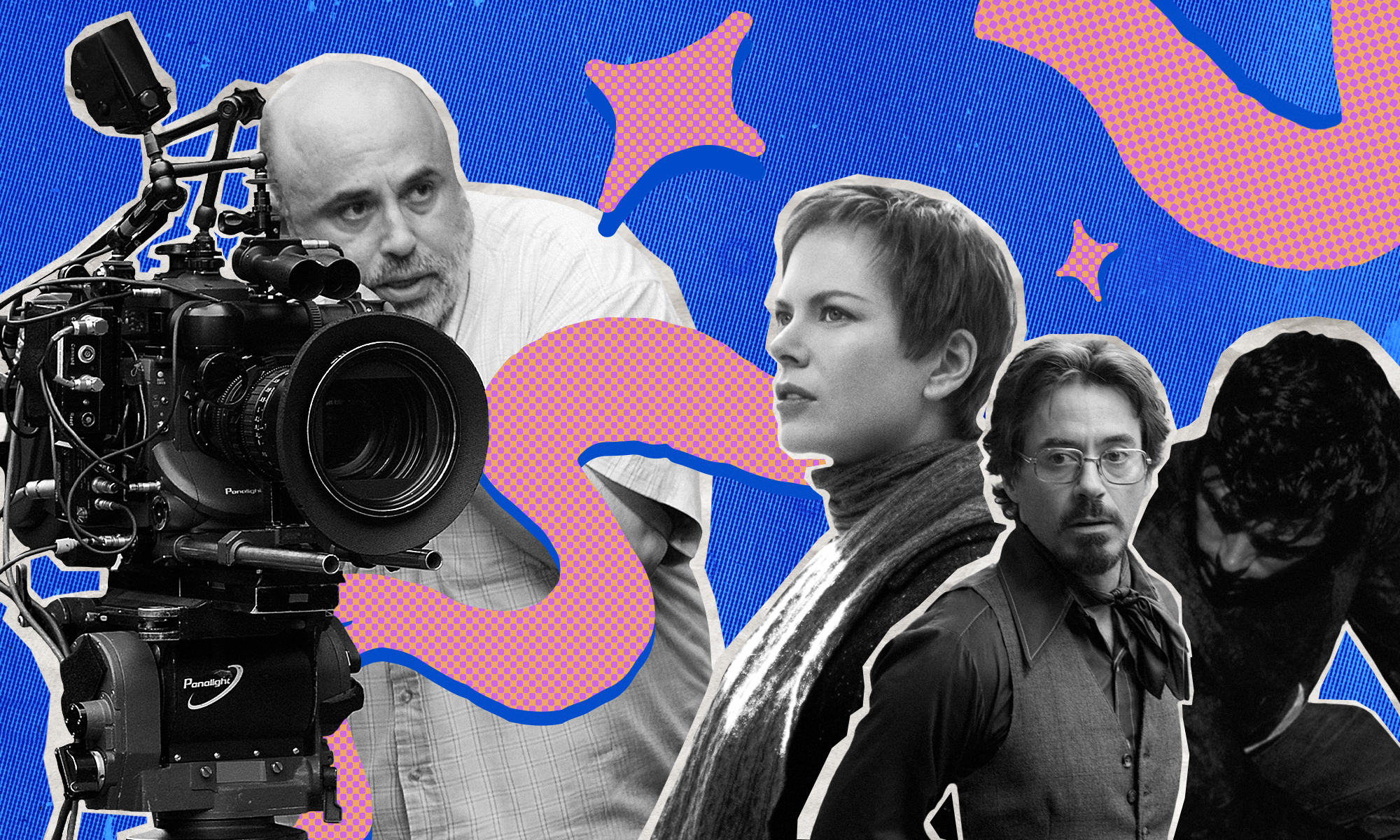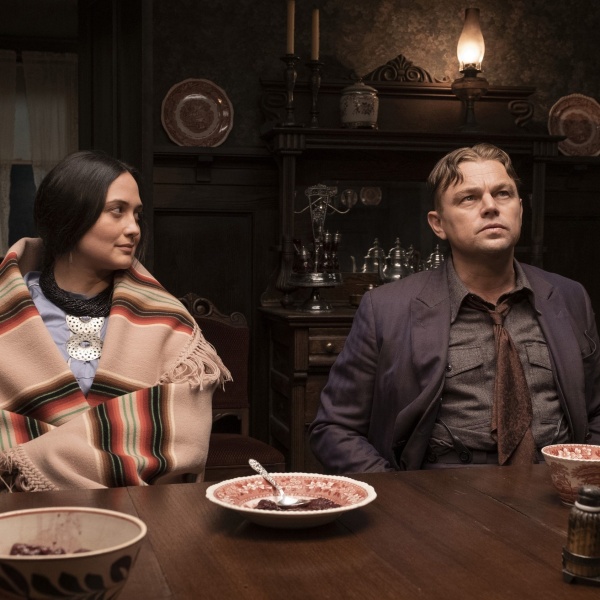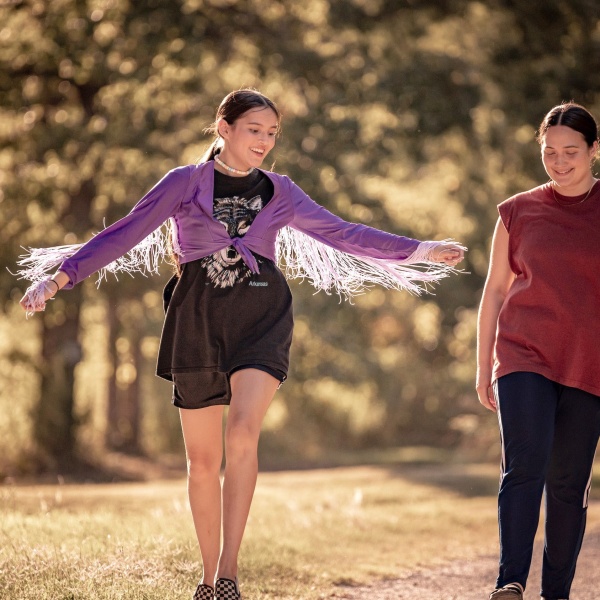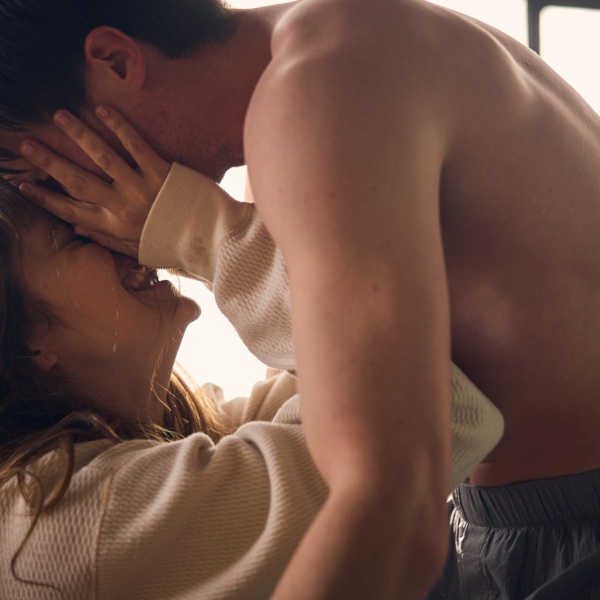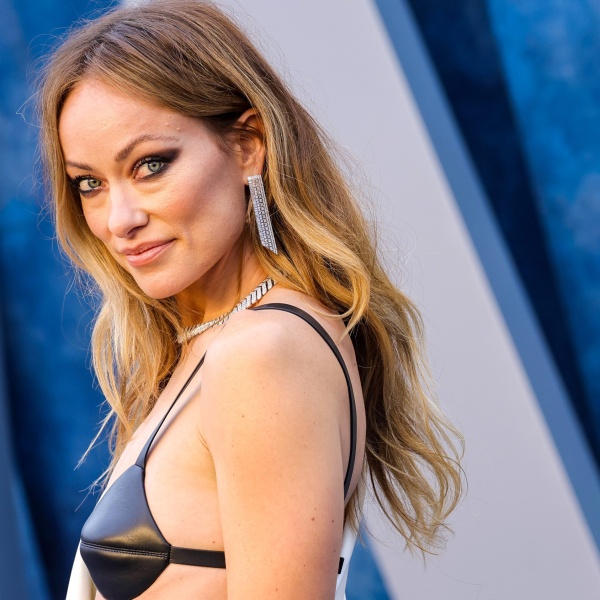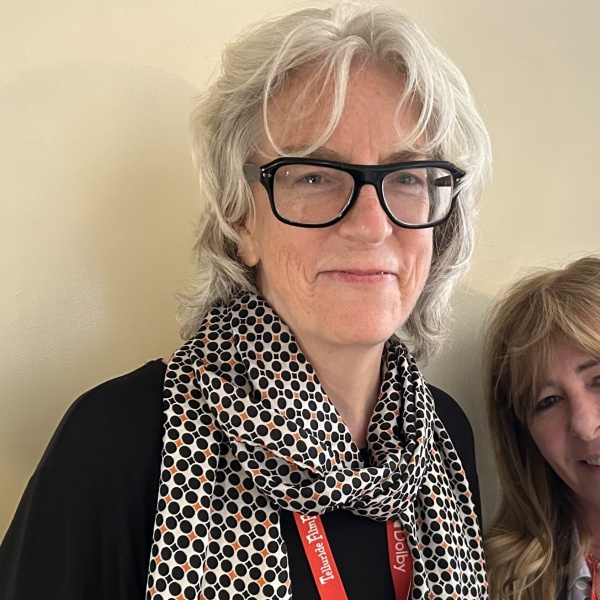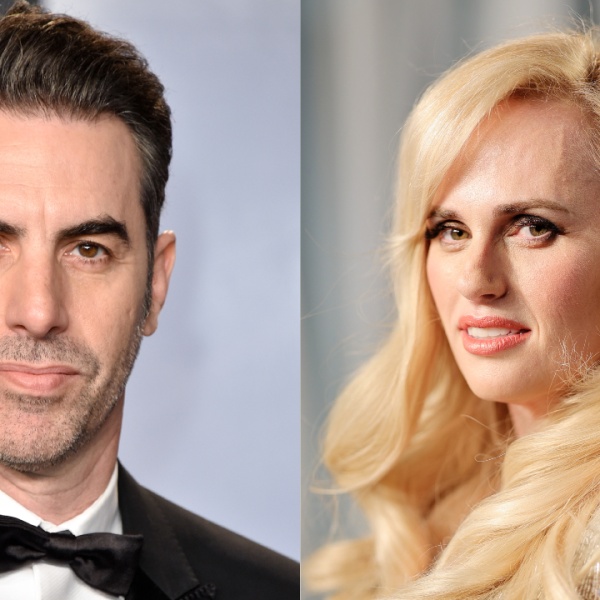When cinematographer Bradford Young was fresh out of Howard University, he would have done anything to get near the set of his idol Harris Savides. He eventually found a way to shoot behind-the-scenes footage for the French director Fabian Barron, who hired Savides to shoot an Armani fragrance commercial in Hawaii. When Young got to the forest set, with shafts light streaming through the trees, he became confused when he flipped on his DV camera to capture the scene.
“The model came on set, and I was like, ‘How’s he going to light her face?,’” recalled Young, who couldn’t believe what happened next: Savides walked on to set with a flashlight in hand and shined it at the model. “He was completely secure with this little flashlight on this million-dollar set. With my eye on the day, I didn’t understand what was happening, ‘How he’s still getting exposure?’ And then I saw the commercial. It was that God particle thing that Harris had. This was complete technical mastery and a complete mystery to observe.”
There was a sense of magic surrounding what Savides was able to do. When discussing what his go-to cinematographer was using to light a scene, director David Fincher used to joke, “I don’t know, Harris’ got a jar of fireflies.”
“Beyond the technical process, there was always something else going on in the picture that I couldn’t account for, something that was only him,” writer/director Noah Baumbach told IndieWire. “Something that I guess we call genius.”
Before becoming a cinematographer himself, Christopher Blauvelt crewed for Savides, starting in 1994 as a camera loader/second assistant and working his way up the ranks until 2012 on “The Bling Ring,” when he would step in to replace Savides, who was battling a brain tumor that would ultimately claim his life at the young age of 55. For nearly two decades, Blauvelt had a backstage pass to Savides’ genius and watched a long line of filmmakers, like Young, trying to get near it.
“The funny thing is, Harris was about simplicity. People would come to set to learn, directors would hire him to learn from him. Harris would turn to me, ‘Oh, these kids just wanted to go to Harris school,’” said Blauvelt. “And because I’m the guy taking the notes as Harris’ assistant, they’d come up to me, ‘Is that all? There’s only one light out the window. There’s nothing inside.’ It was often so simple, and a lot of people really thought there’s some crazy tricks, but it was mostly in the prep and the testing and his innate talent.”

The 1990s was a time when, if Hollywood wanted to find the most innovative filmmakers, they would scour MTV, and Savides was the most sought-after cinematographer working in music videos. Directors like Fincher and Mark Romanek hired him to shoot videos for the biggest musicians, Madonna herself would insist on Savides when it came time to shoot her own. Not only were directors and stars drawn to the stunning images, ones that didn’t quite look like what anyone else was doing, they were drawn to Savides himself.
“I’ve never seen a human being who looked like him, he was this big guy who had such like a distinct presence about him,” said Jason McCormick who, like Blauvelt, was a dedicated member of Savides tight knit crew before becoming a cinematographer himself. “He had an aura, he could be like the godfather, but he wasn’t a tough guy. I think coming from the Bronx, coming from immigrant parents, that’s where the real truth of it all is.”
In a cinematography world that can breed a white glove elitism, McCormick said that, at his heart, Savides was a street kid who forgot more about art and cinema than most filmmakers knew. Savides, the only child of immigrants from Cyprus, was raised in the Bronx and was sent to military school when he had trouble getting his act together, but he was also a complete art nerd who studied photography in Europe and the School of Visual Arts in Manhattan.
Director Gus Van Sant, who was one of Savides’ closest collaborators, told IndieWire that a huge aspect of their bond and friendship was a deep knowledge and shared love of the 1960s and ’70s art world and European cinema they grew up on in New York City. It’s a passion that would lead to long conversations that spilled over to set, where it would fuel the two men’s desire to play and experiment.
“It was a constant dance between intellectualizing and technical and just pure childlike creativity, the harmony between those is so rare in a cinematographer,” said McCormick. “For all his talent, what I learned from Harris is it was about the energy, his enthusiasm, and playfulness. As big as he was, as imposing and intense as he could be, there was still a lightness to his energy. He created an environment where you felt like something special was about to happen on set.”
It was an energy Sofia Coppola was in desperate need of coming off “Marie Antoinette,” a film that was rife with technical and logistical demands, and with financial pressures that took their toll. She was burned out on wanting to still be a filmmaker before making “Somewhere” (2010) with Savides.
“I was done with making movies until I met Harris, who made me love it again,” said Coppola. “I loved working with Harris, everyone did, he reminded me of the art and poetry of filmmaking, what we love about it and to forget all the things that can make it not fun. He didn’t have an ego, he was there for the fun and love of making something beautiful and emotional. Some of the best experiences of my life were being on set with Harris.”

Of the dozen people IndieWire interviewed for this article, the most common analogy for Savides’ process was that of a Michelin star chef. The ability to create a unique texture, color, and bespoke look for each film came from finding the right mix of ingredients. Similar to other cinematographers, this came from doing tests.
“Harris was the only person I’ve ever known, and probably will ever know, who had over a week-and-a-half of testing before we did a commercial or video,” said Blauvelt. “And that’s because there were really smart people, like Mark Romanek and David Fincher, who wanted to let Harris do his thing and find it. Harris was maybe a bit of an anomaly in the unashamed will to find something new every time.”
Savides’ understanding of the photochemical process of shooting celluloid film stock — how to develop it, how far he could push it, and what he could pull from it — was unsurpassed. Take a film like Gus Van Sant’s “Elephant,” one that adapted an extreme naturalism, forgoing lighting as the camera followed teenage first-time performers around a real high school, moving between indoor to outdoors in long, uninterrupted Steadicam shots. It’s the type of film most cinematographers would feel was limited, beyond movement and composition, in how they could shape a look. And yet the colors and textures in “Elephant” make the ordinary look extraordinary.
“The first thing I think about with Harris’work is the way he uses color,” said cinematographer James Laxton, who was inspired by Savides coming up a cinematographer. “I think of a film like ‘Elephant,’ I would almost call it saturated, there’s almost a pop, but yet the tone of that film is not that. That sort of contrasting perspectives of using color in ways that aren’t traditional. There’s an elegance to his work, a light touch, someone whose work was not trying to manipulate the scene or the environment, but was making this powerful impact.”

To create the “Elephant” palette, Savides shot on extremely flat film stock, 500T 5263. Its low contrast had been specifically designed for Japanese television, and Kodak was discontinuing it because no one knew about it, let alone used it. He then printed the final prints to Kodak’s new colorful and contrasty Premier stock, the combination of which gave the film what Savides called “a bubblegum” quality.
Kodak’s development of the Premier stock was part of a trend toward a crisper image. As Kodak started to compete with high definition, and the industry was continuing to reach for a contrasty and vivid look, Savides would have Blauvelt on the phone around the world hunting down old lenses (ten to 20 years before it was in vogue) intentionally trying to bring aberrations into the image to break up the sharpness of modern cinematography.
“He was always getting mad at Kodak for making their film look too sharp and too colorful, it was a constant battle,” said Blauvelt. “The films that he would always reference are like the ones we still talk about, Bresson, Ozu, Kurosawa, anything shot by Gordon Willis. He had a love and a romanticism about like the way that films used to look.”
Savides’ aesthetic was a far more low contrast negative, which, like on “Elephant,” he knew he could better control in the printing process, but also because of the creamier whites and milkier blacks it produced. He would try to shoot everything with the aperature wide open, to get a less sharp image — to Savides the difference between what happened to blacks between a 2.8 and 5.6 f-stop was everything.
“It’s purely about evoking the feeling,” said Savides in an interview about why he liked to shoot wide-open. “What feels better is that creaminess, that softness, it’s a dreamier picture while you’re watching, just takes you a little bit away from reality, and more into your mind.”
According to the directors he worked with, it’s what they loved most: Savides’ ability to take an abstract feeling or atmosphere and make it tangible in images.

“I told Harris I wanted the look of ‘Margot at the Wedding’ to feel like the end of a day inside a country house where the light had faded but no one had yet thought to turn on a light,” said Baumbach. “The tests we subsequently shot of Nicole [Kidman] and Jennifer [Jason Leigh] with only available light contained a lived-in beauty, not only inside the scene, but in the celluloid itself that gave me an immediate hit of emotion.”
How Savides achieved the specific grayness of the “Margot” is instructive of one of the basic principles of his testing process: Push beyond the limits, then pull back to edge. “We would really mess with film stock, like we would really shit on it as much as possible, and then take it into the telecine to find the breaking point,” said Blauvelt.
McCormick always saw an anti-authoritarian rebellion in Savides, whatever the rules were, whereas the nature of most DPs was to tend toward staying within the safety zone Savides would preach: “If you aren’t scared, you aren’t doing it right.”
“We use these lenses that were made in ‘30s, the original Balthar lenses,” said Blauvelt of “Margot.” “If you looked at them with your eye, it was green, yellow, fuzzy, they looked like ashtrays. They were so messed up, and then we were pre-flashing our film in the lab, pulling our film [in the lab] and he was underexposing by something crazy like four stops.”
While shooting, the hero lens fell apart while they pulled focus, while the mount stayed attached to the camera and the barrel fell to the ground. “Then one day, right after, Harris got a call from the studio and they like had a panic attack,” recalled Blauvelt. “The head of the studio he said to him, ‘Harris, I just need to hear it from you, is this OK? I have Nicole Kidman in this movie, and I can’t see her face.’ Harris was like, ‘Chris, I think we might have gone too far.’”
In typical Savides fashion, just a little later in the process normal, he pushed past the breaking point, and subtley pulled back (Blauvelt thinks it was only one-stop) to find where he could sit right on the edge.
“I didn’t realize how nervous this all made him until Sam Levy [another of Savides’ long time trusted crew members who became a cinematographer] told me later that Harris would call him and say, ‘Don’t do what I’m doing, it’s too crazy.’ And it kind of was,” said Baumbach. “There were many inexplicable inconsistencies in focus and texture, but I didn’t care because I had so much faith in him and the image was so alive and beautiful.”

“Margot” wasn’t the first time Savides got a call from the studio or a producer, and it was actually one of the least threatening, his job would often be on the line due to how far he’d push things. That was the case on “Birth,’ which to create the ethereal creamy texture for director Jonathan Glazer’s semi-ghost story, Savides would underexpose the negative by two stops, and then pulling it by two stops in the development (something that dumbfounded Savides peers, in one of the more entertaining cinematography forum discussions started by a young Jody Lee Lipes).
“The margins were so narrow, but once we’d seen the promise of those early camera tests — that luminosity — we went all out,” said Glazer.
The powers that be didn’t see it that way. Looking at individual shots in the dailies, it seemed way too dark. Savides though knew to get the effect of what he and Glazer were after, they would need see the footage put together.
“He was about to get fired from ‘Birth,’ 100 percent true. They were tripping on how thin the negative was,” said McCormick, relying one of Savides’ favorite war stories. “There was a screening, it was shown the way it was intended, and everybody was in the room. And when they saw it, he said you could hear the breath escaping people. It ended and they turned and said, ‘Just keep doing what you’re doing.’”
McCormick loves this story, because it speaks to Savides’ integrity as artist, which was more a matter of character than skill. The dedication to the art and story above all us, and the faith that if you do that the work itself will have integrity.
“He proved to me that the kind of textural, spiritual thing that I liked in the images that I was making had a place in majority cultural,” said Young. “That you can underexpose a film by how many ever stops and it can still be seen in the theater and that people will respect that and understand that it’s part of the storytelling. That means a lot to me. ‘Birth’ was the beginning of it for me, I wasn’t even hip to Harris’ work, but once I saw that I went back and watched everything he ever did and just stayed in tune with him.”
In the digital era, more cinematographers, most notably Young and in Fincher’s films, have explored making films in lower-end of exposure, often referred to as the toe of the image, where digital cameras can dig out more detail than film stock, and cinematographers can double-check themselves by seeing what information/data is being captured in the digital waveform. But that wasn’t the case in the ’90s and 2000s when Savides was doing it.
“When he was in the ‘90s, when he was just like the guy every DP, every director was chasing, I think that because he was pulling the film and underexposing, living in the lower layer of the film, and that’s a place that nobody went. So he was creating a look that people couldn’t even figure out how to get to,” said Blauvelt.

Van Sant, who met Savides on a Levi’s commercial, thinks the cinematographer’s background in part shaped his experimental nature. Not only was Savides’ transition from photographer to cinematographer an unconventional path, but coming up in commercials and music videos rewards risk-taking and bold strokes in a way moviemaking doesn’t.
“Maybe he wouldn’t have been like that had he been a very like cinema purist, you know somebody that didn’t shoot commercials and or music videos,” said Van Sant. “It might’ve been different because I think he really liked all the different things that you could do. And I did too.”
When Van Sant went to make “Gerry,” the first of a trilogy of films dubbed “The Death Trilogy,” he was actively trying to subvert the rules of American filmmaking. It’s a journey in which Savides was the perfect co-pilot. With “Gerry,” Van Sant and Savides were specifically reaching for the slow, long take cinema of Hungarian director Bela Tarr’s “Sátántangó.” Working off an outline in which each scene was reduced to a sentence, the film would be improvized and discovered throughout the process with actors Matt Damon and Casey Affleck, but shot in long moving shots where Savides’ team would have 1,500 of dolly track to lay in Death Valley desert.

“Gus and Harris were like two little kids, really excited about everything,” said Blauvelt of the shoot that took place in the 120-degree temperature. “It was one of the most special experiences of my life.”
Watching behind-the-scenes footage of the shoot, what sticks out is how absurdly calm it is considering the elaborate shots, chasing sunlight, working in 120 degree temperatures, and the combination of improvisation and tracking shots that required hundreds of feet of dolly track.
“I think maybe the reason that he and I like to work together was because we like to be calm,” said Van Sant. “It’s the only way you can turn on a dime in the last moment before something is set in stone.”
On the Death Trilogy, Savides proved to be the perfect collaborator for exactly that reason, pushing back when they were on the verge making a mistake, and helping Van Sant reinvent the film’s language. On “Elephant,” the director was convinced a super-wide 8mm lens would be the way to capture the observational nature of the camera, but after watching first day’s dailies it was Savides who could sense the connection to the young characters’ humanity was being lost.
On “Last Days,” the director and cinematographer planned to continue the constantly moving camera of “Gerry” and “Elephant,” only to arrive at the the house that would be the film’s main location and discover it couldn’t accomodate camera movement. Together, they pivoted to adapting Chantal Akerman’s (another huge influence on the Death Trilogy) approach of a static camera, placed at a consistent height for each shot, and letting each scene play out in set frame that didn’t adjust to the characters.
In the “New Cinematographers,” book Savides described shooting “Gerry” and working with Van Sant as “an awakening” for him as an artist. “The story lent itself to this simplistic approach, but it was so beautiful and pure. There was a story and there was some kind of subtext and paradox,” said Savides. “All of a sudden it was like, ‘God, this is how you have to approach every movie.’ It’s changed the way I work on films. It’s changed my whole outlook.”

When Fincher asked Savides to shoot “Zodiac,” the two long-time collaborators were coming from diametrically opposed directions in their careers, and the challenging shoot would be their last film together. Fincher’s push for digital would be the start of his creating a workflow in which could exert even far greater control on the workflow and image, while Savides was coming off his newfound sense of liberation working with Van Sant.
The digital camera technology, the Thompson ViperCam, in Savides mind’ (and many others) wasn’t ready for a major motion picture. It had significant limitations, not the least of which was the crazy way it would suck up any green in the image, the excessive digital noise it created, and its inability to handle bright highlights. Whereas Fincher was happy to embrace a digital hyper-reality for a story adhering to the strict factual details of the hunt for the Zodiac killer, it was an antithesis of Savides’ creamy, dreamy, soft aesthetic. At the same time, Fincher likely knew if there was anyone who could crack the code, it was Savides.
“Harris took it as a challenge, I know that for a fact, because we were there testing and testing and testing for three months straight. There were definitely days where he was like, ‘This thing’s a piece of shit, I hate it,’” said Blauvelt. “And then finally we were in a theater one day with Fincher and everybody agreed, this can actually look good.”
It is hard to fully capture how monumental what Savides and Fincher accomplished with “Zodiac,” which still to this day doesn’t show evidence of the Viper’s limitations, having produced a distinct look that would change filmmaking. Paul Cameron, who shot “Collateral,” the other groundbreaking digital Hollywood film of the era, had wrestled with the Viper.
“When I saw ‘Zodiac,’ I called Harris immediately. I was like, ‘Jesus, we attempted to use that camera on some scenes and it was the wrong camera. You’ve created this amazing visual landscape with this camera that was so unique and so characteristic,’” said Cameron. “Truly to me the Viper and
‘Zodiac’ was a different color landscape I had never seen on film before. And that’s Harris’ innate sense of how to utilize highlights , and wrangle idiosyncratic aspects of the viper, and control them like a little wild animal.”
When photographer Gregory Crewdson — whose intricately staged tableus have a distinctly cinematic quality that has inspired a number of filmmakers, including Fincher — saw “Zodiac” he was finishing “Beneath the Roses,” a eight-year photography series in which he started to make the transition to digital himself.
“When I first saw it, I remember being incredibly moved by it, but also jealous,” said Crewdson. “It’s the first movie I feel that really convincingly used digital in a considered way. That iconography of driving through a suburban street and peering through windows, but with that whole new kind of foreboding. I really feel strongly that we had never seen that kind of sensibility before, certainly not from Fincher. I love all Fincher’s films, but that felt really new.”
McCormick believes it took the ying-and-yang of Fincher and Savides, constantly bumping up against one another, and pushing each other, that resulted in the miracle that was “Zodiac.” Crewdson agrees.
“Fincher is a technical genius as well, between both of them they solved the problem, and I think changed the game,” said Crewdson. “You cannot watch a limited TV series without thinking of that film — not that any nearly come close to [what ‘Zodiac’] achieved — but it’s so influential.”

Beyond the lasting impact of the digital “Zodiac” aesthetic, and the incredible body of work that inspired a generation of cinematographers, like Laxton and Young, it’s hard to pinpoint the lasting influence Savides had. In many ways, his untimely death left a Harris-sized hole in the film world. He was a unique talent that some cinematographers make the mistake of trying to imitate.
“In terms of talent, for me, he was the best of the best. Even today I could say he’s the best of the best, where else do you have a range of films from independents to studo films,” said cinematographer Phillippe Le Sourd, who was friends with Savides. “Anyone can make an image darker, there’s no magic in that. The magic is the talent. It’s like you could say, okay, ‘Who is after Caravaggio?’ No one, there was one Caravaggio. That’s it.”
In the final weeks and month of Savides’ life, the tumor started to get the best of him, and he had gaps in his memory. When Coppola came to visit, she was about to shoot a commercial and asked Savides who she should hire. Savides instantly knew, but the name escaped him. He sent her to his desk to retrieve a polaroid Le Sourd had snapped of them together the last time they were together. He pointed to the photo, telling her “the Frenchman.”
In the year, following his death, four films would be dedicated to Savides’ memory. Blauvelt would pick up the reins on “The Bling Ring,” and Levy would execute the plan he, Savides, Baumbach, and Greta Gerwig designed for “Frances Ha.”
And Coppola would track down Le Sourd from the photo. The two have worked together ever since.
